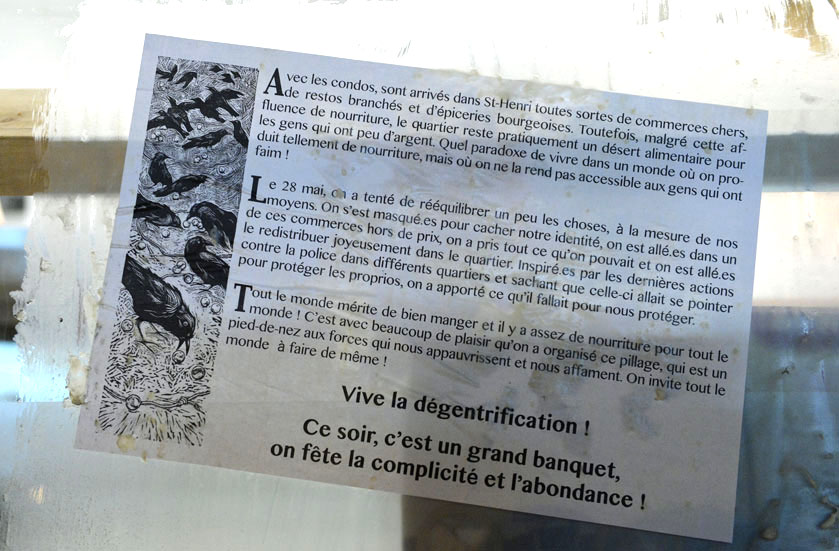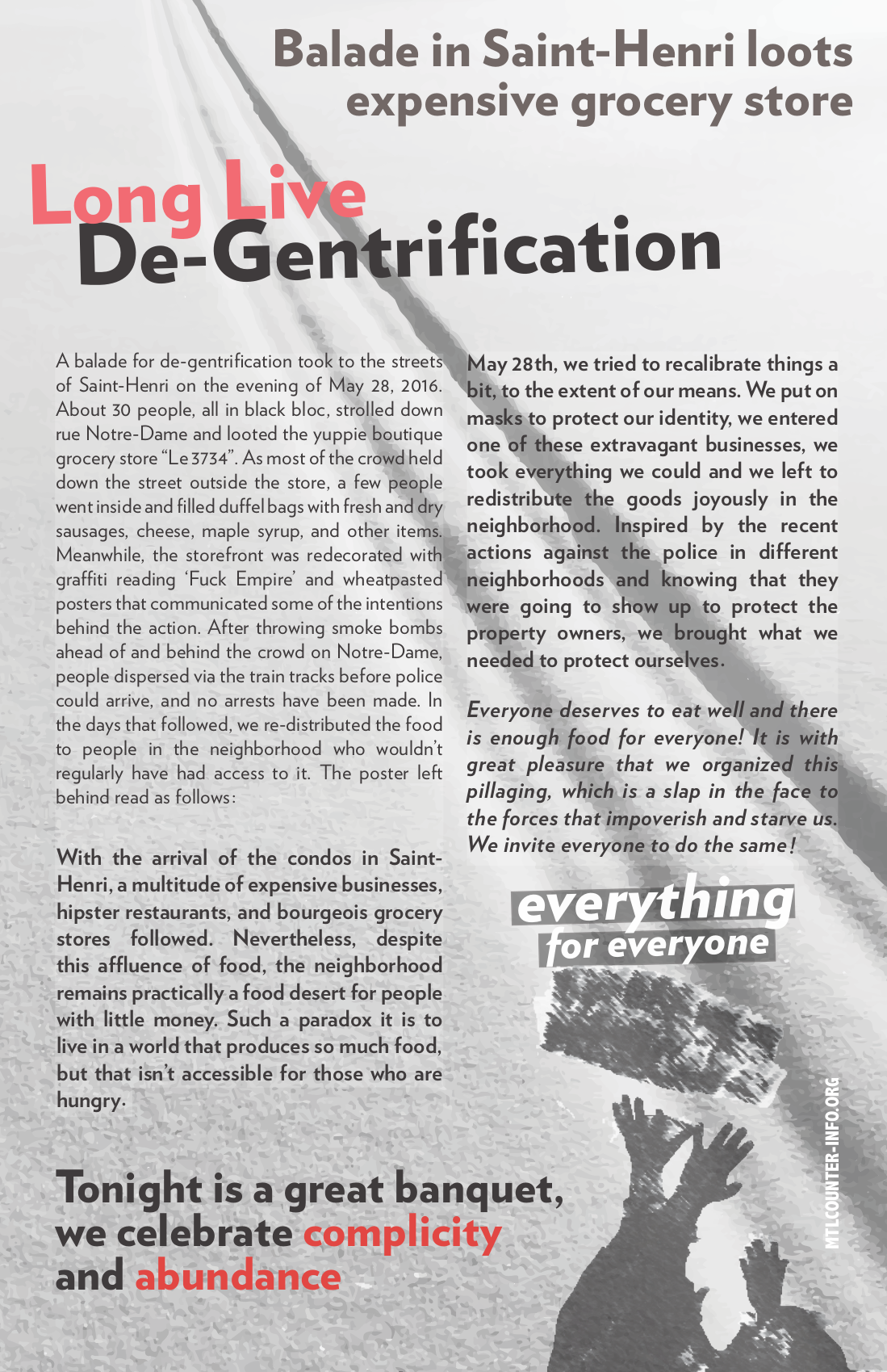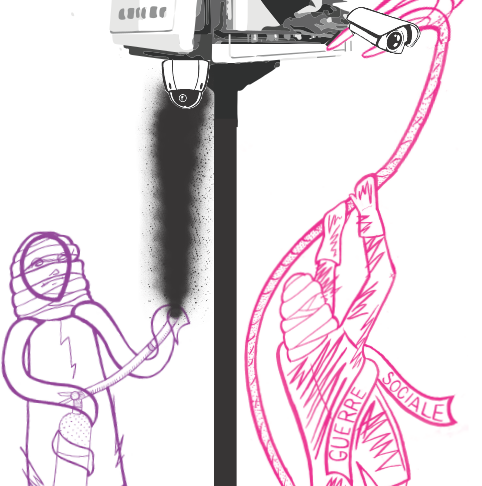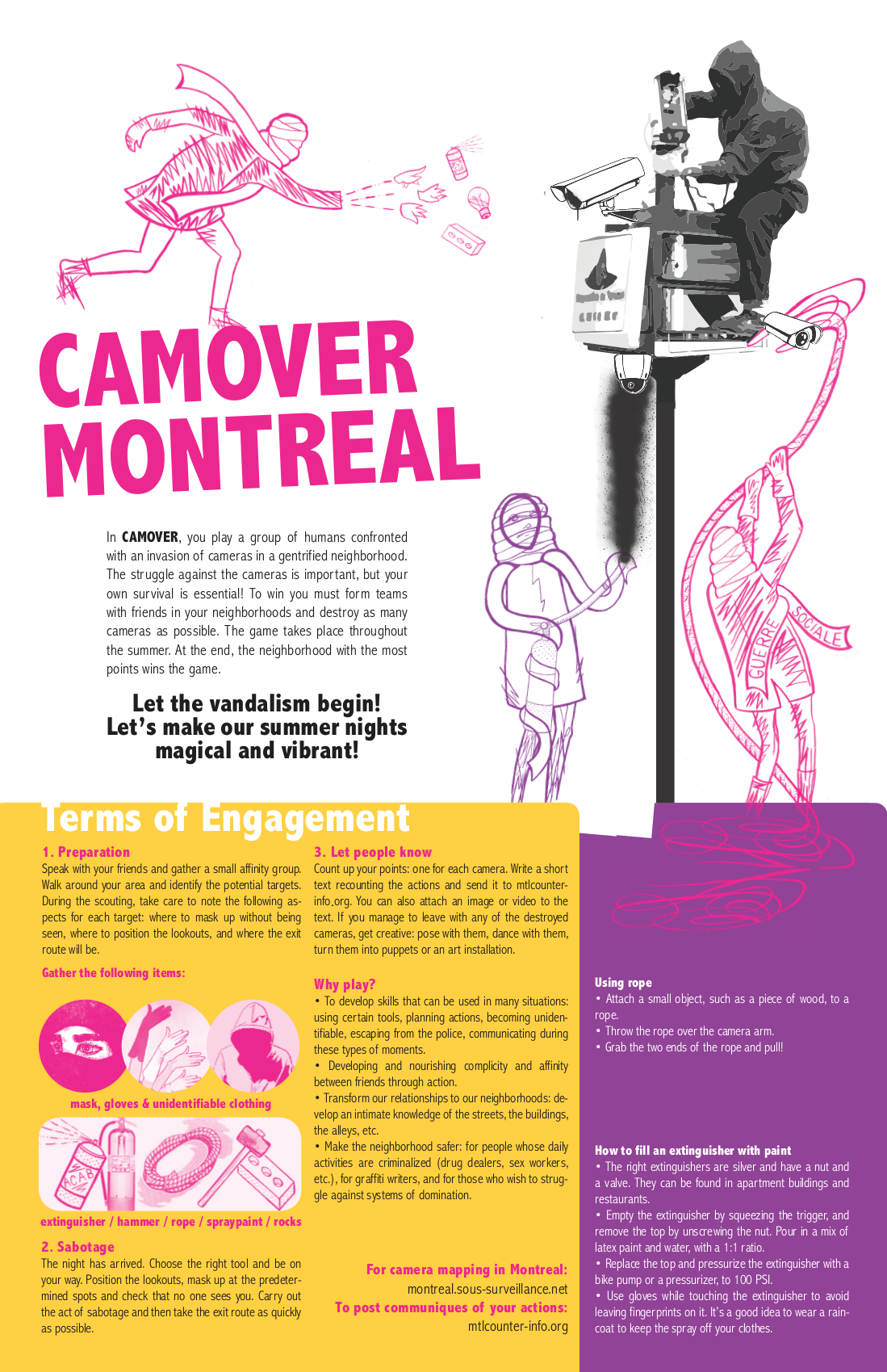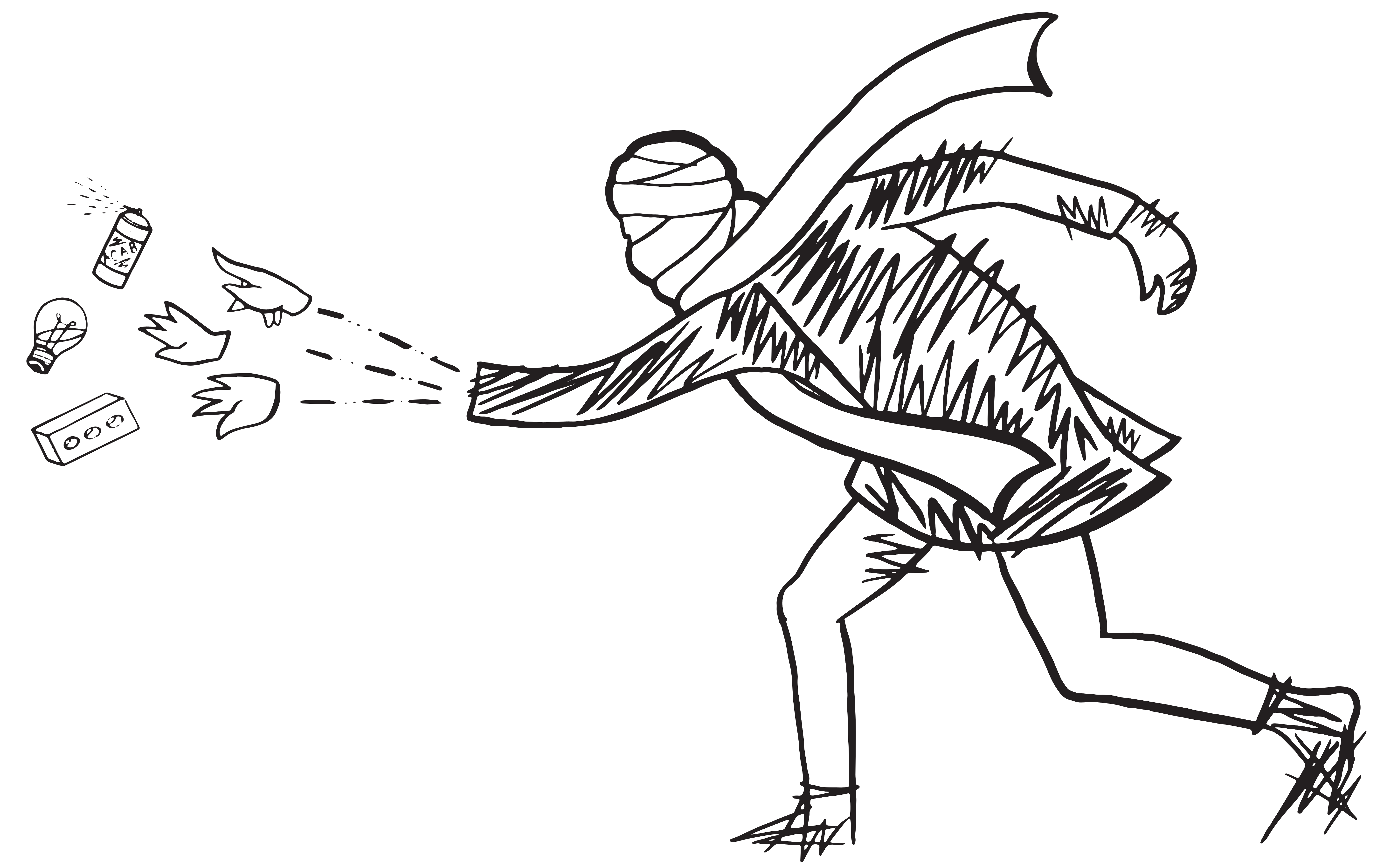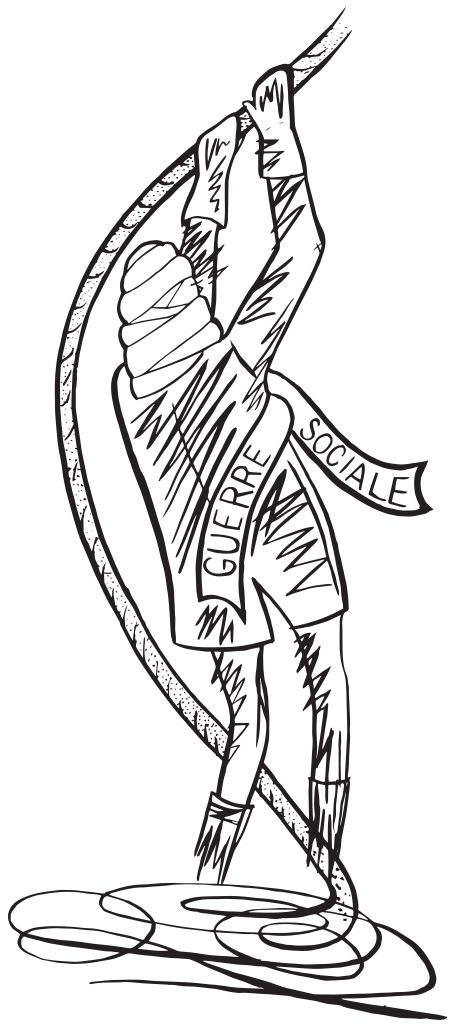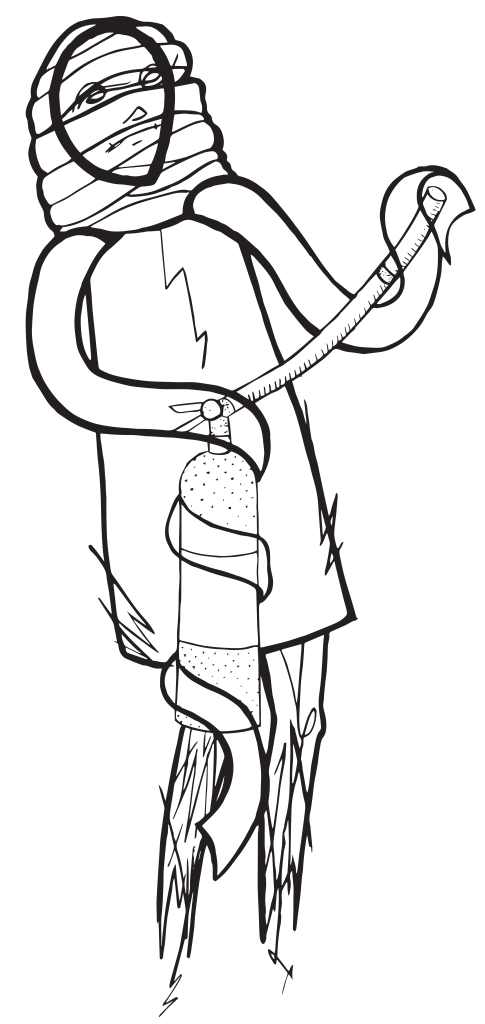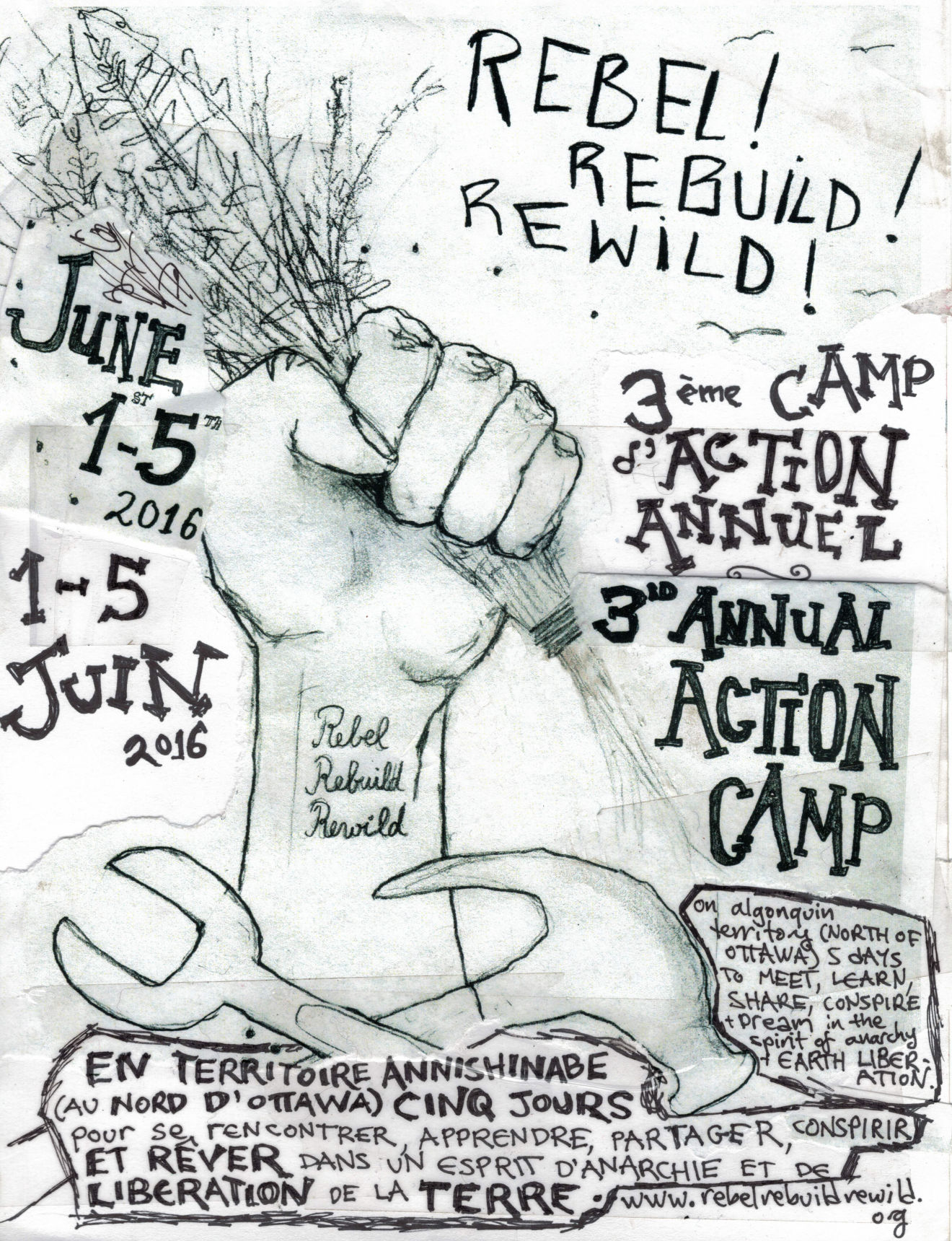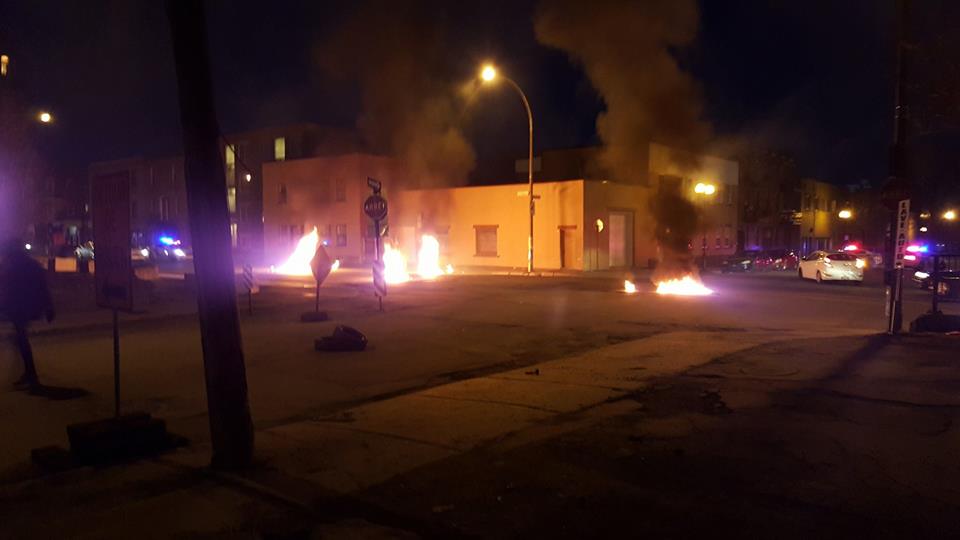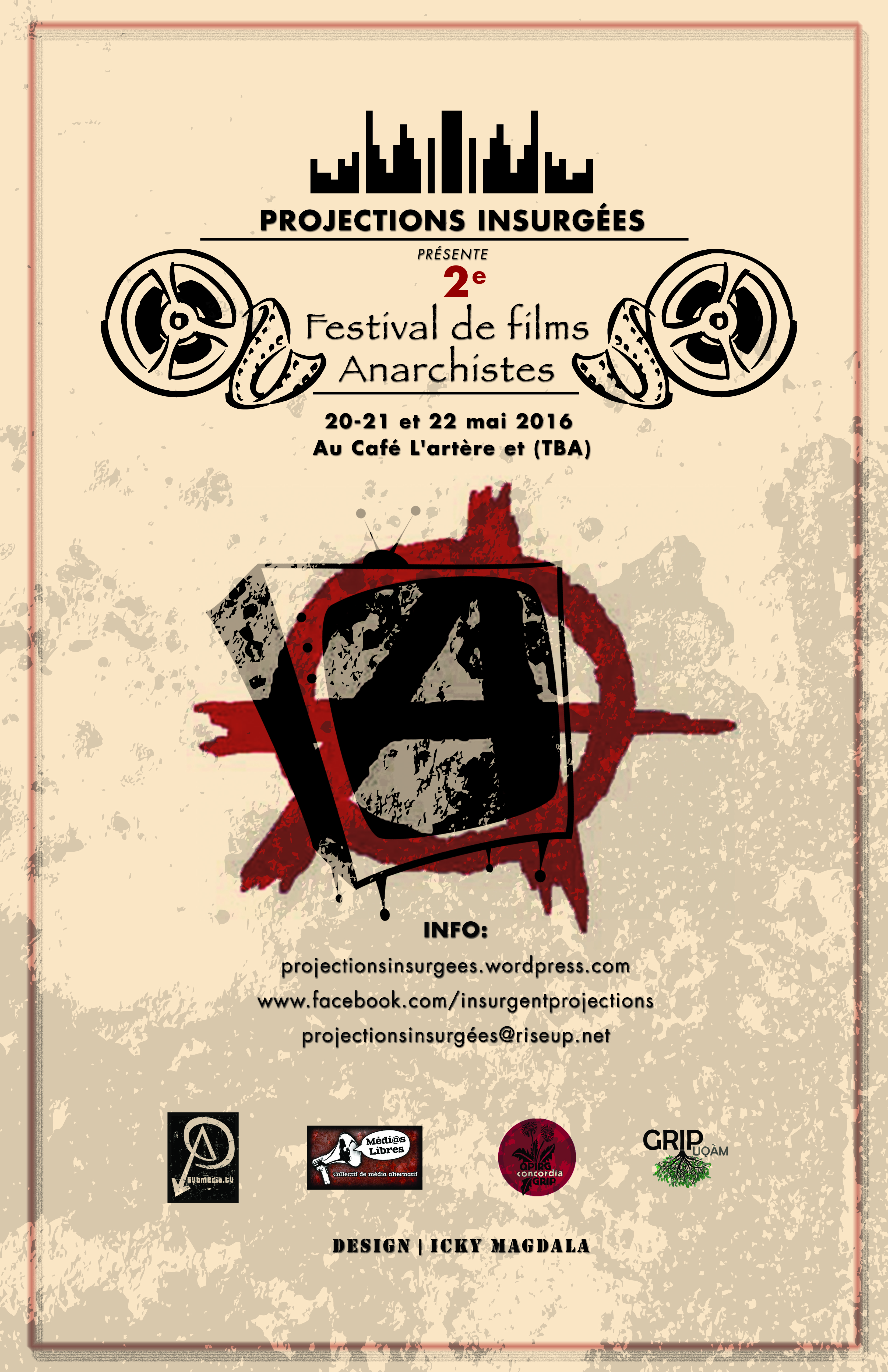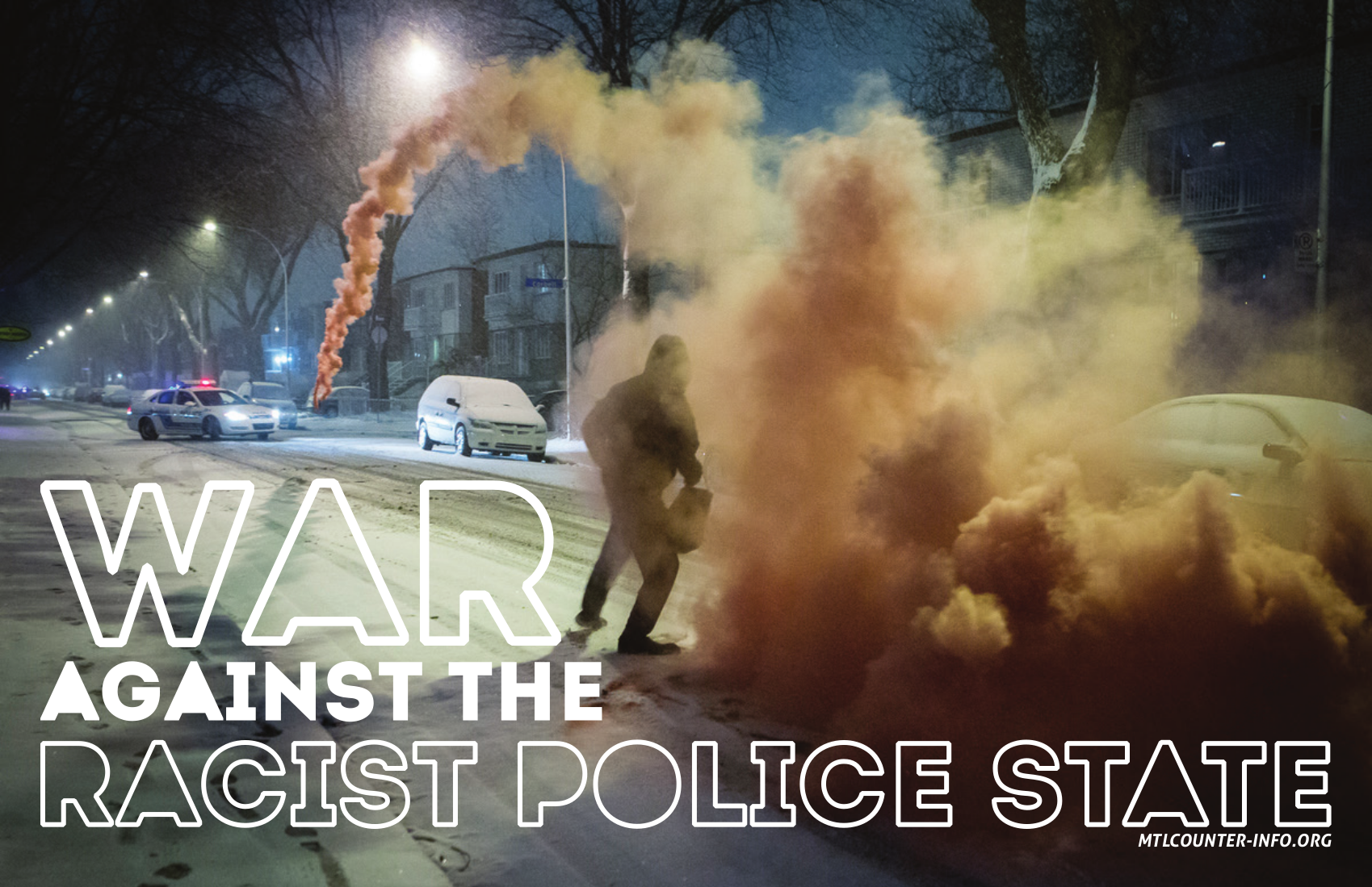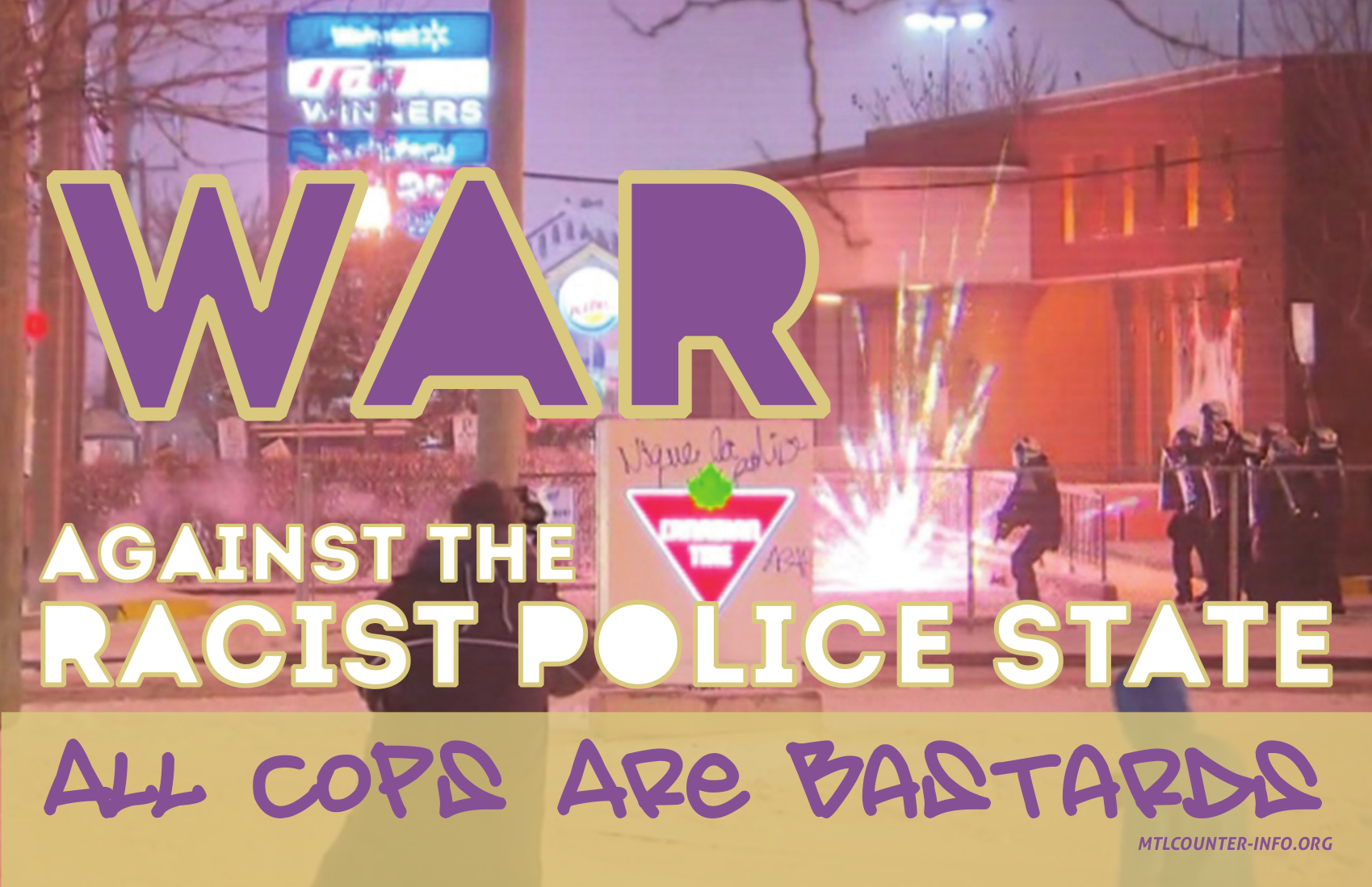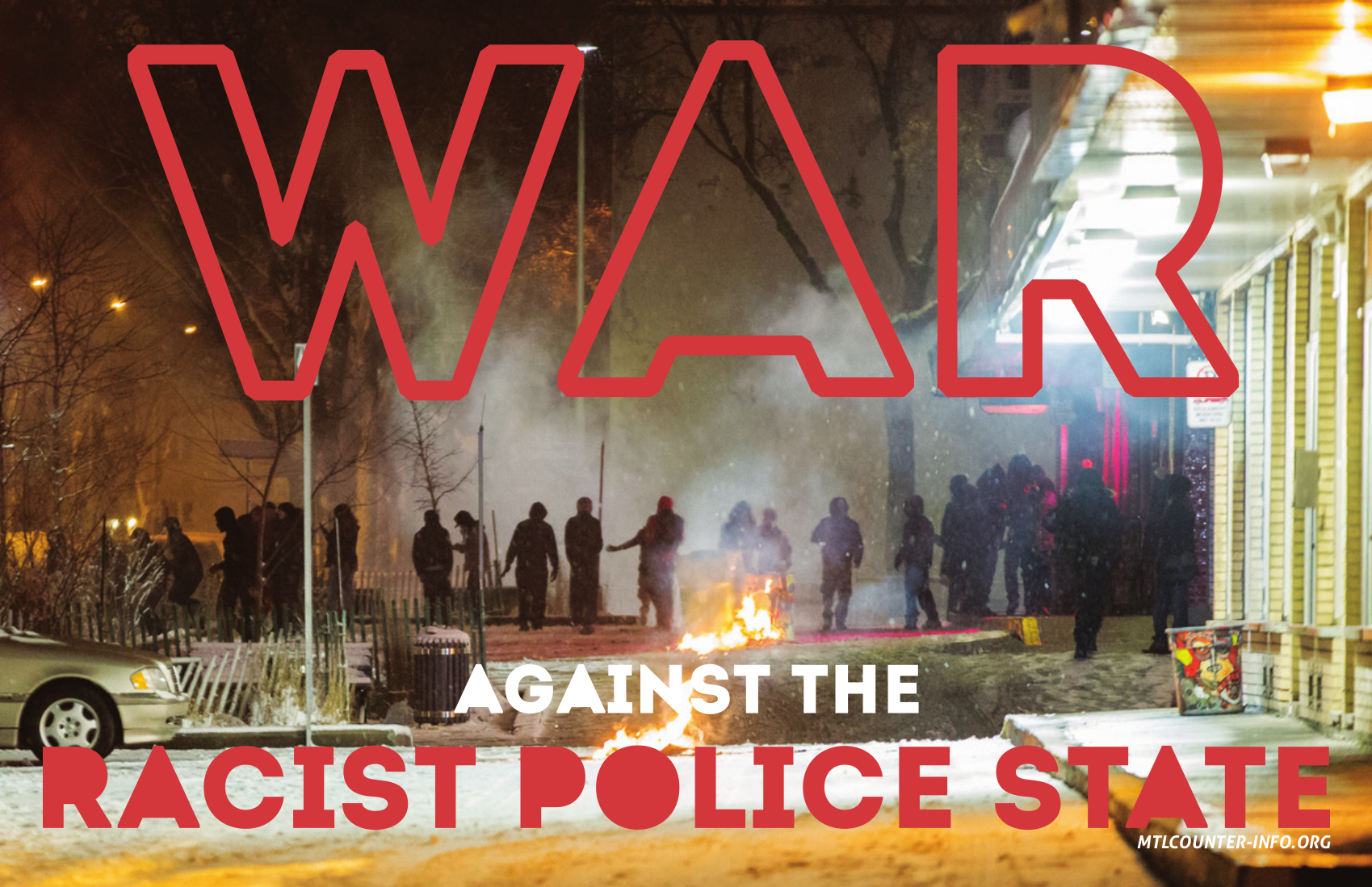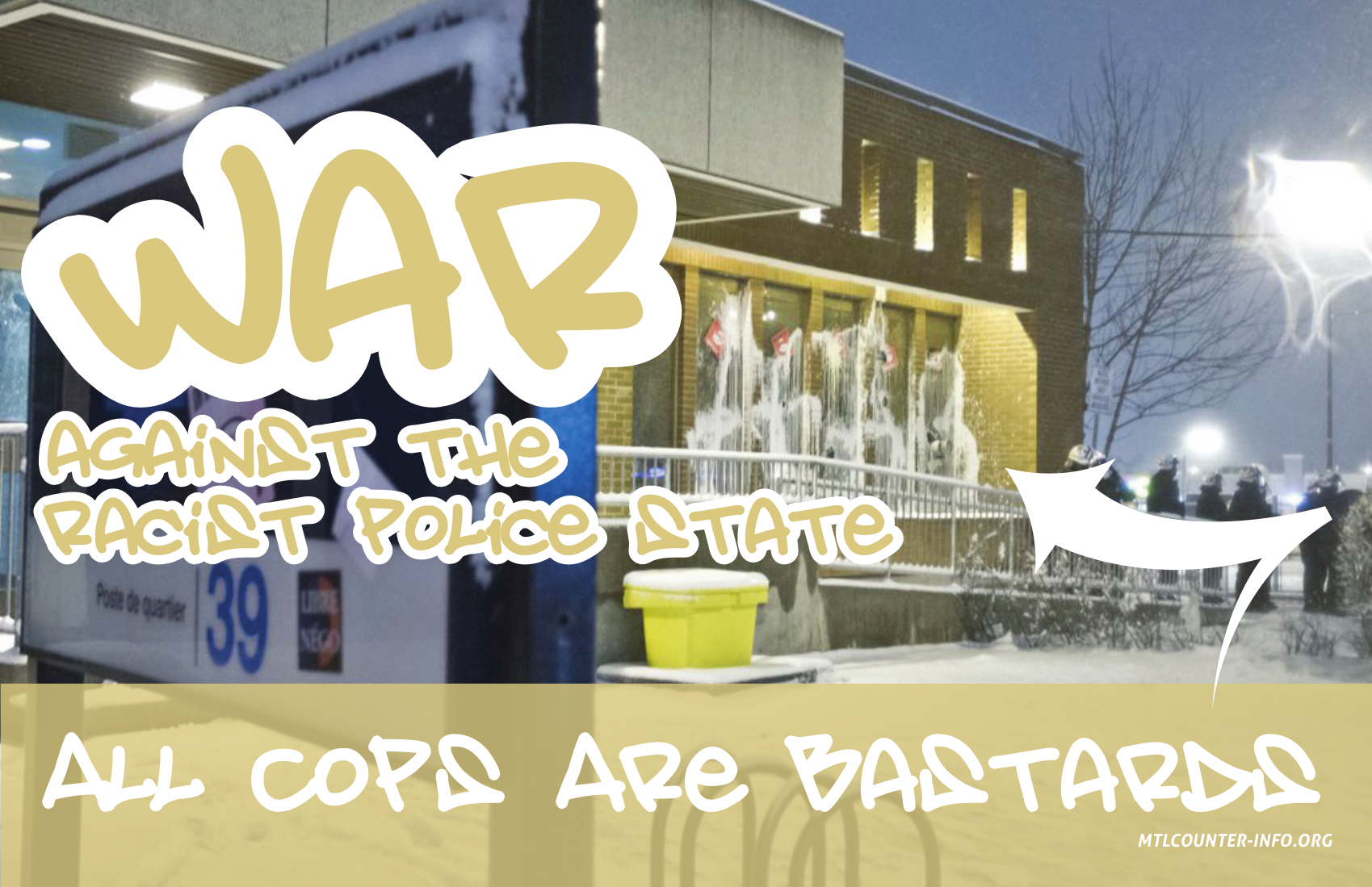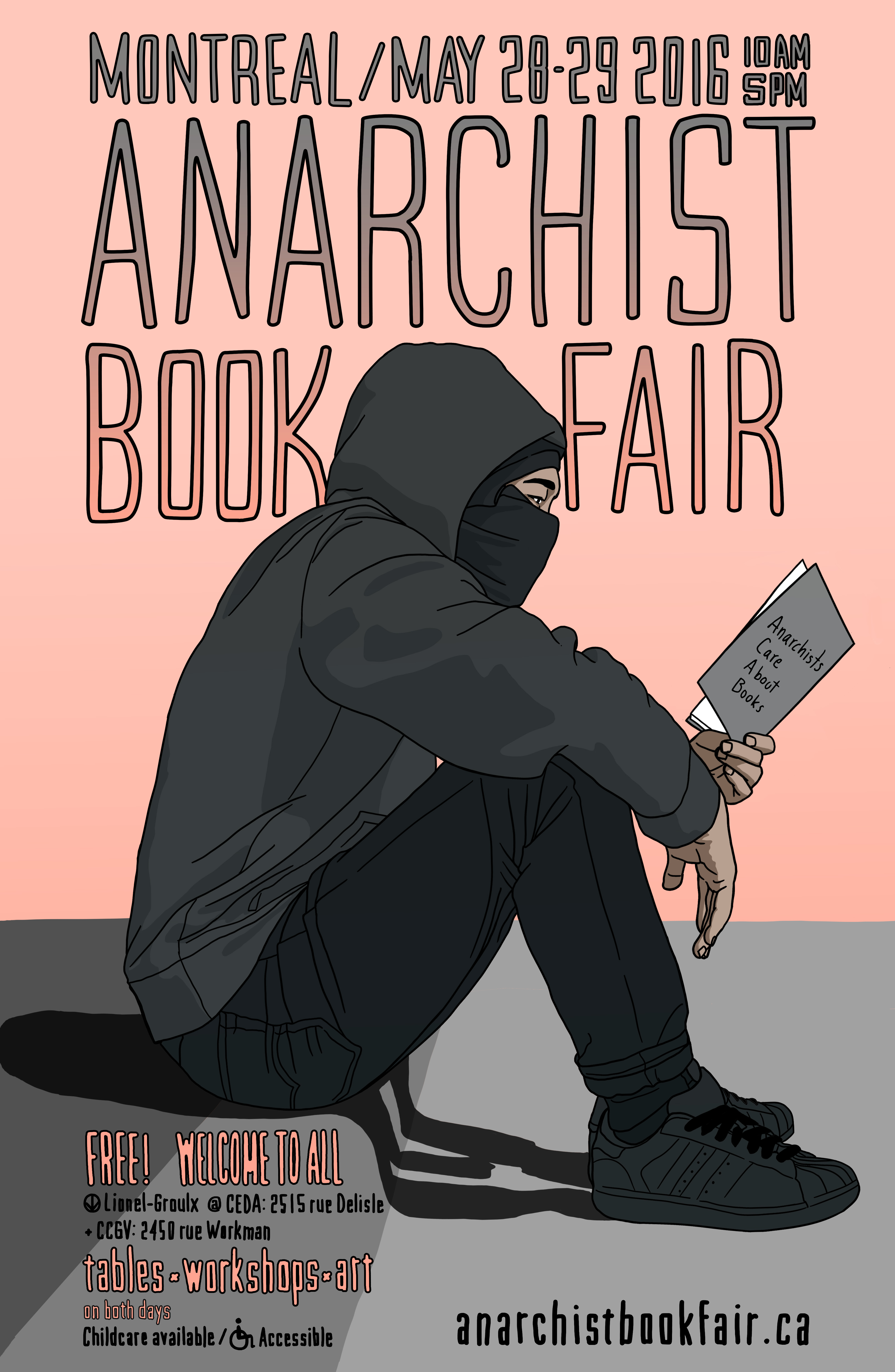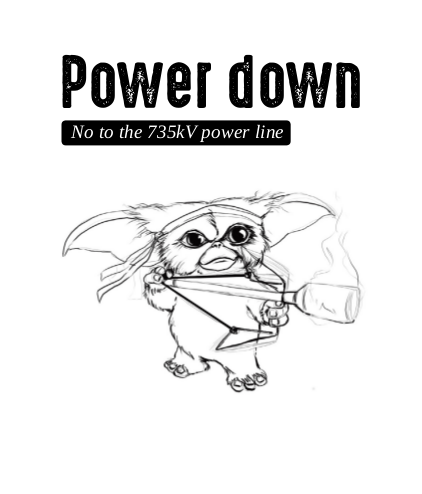Anonymous submission to MTL Counter-info
A balade for de-gentrification took to the streets of Saint-Henri on the evening of May 28, 2016. About 30 people, all in black bloc, strolled down rue Notre-Dame and looted the yuppie boutique grocery store “Le 3734”. As most of the crowd held down the street outside the store, a few people went inside and filled duffel bags with fresh and dry sausages, cheese, maple syrup, and other items. Meanwhile, the storefront was redecorated with graffiti reading ‘Fuck Empire’ and wheatpasted posters that communicated some of the intentions behind the action. After throwing smoke bombs ahead of and behind the crowd on Notre-Dame, people dispersed via the train tracks before police could arrive, and no arrests have been made. In the days that followed, we re-distributed the food to people in the neighborhood who wouldn’t regularly have had access to it. The poster left behind read as follows:
With the arrival of the condos in Saint-Henri, a multitude of expensive businesses, hipster restaurants, and bourgeois grocery stores followed. Nevertheless, despite this affluence of food, the neighborhood remains practically a food desert for people with little money. Such a paradox it is to live in a world that produces so much food, but that isn’t accessible for those who are hungry!
May 28th, we tried to recalibrate things a bit, to the extent of our means. We put on masks to protect our identity, we entered one of these extravagant businesses, we took everything we could and we left to redistribute the goods joyously in the neighborhood. Inspired by the recent actions against the police in different neighborhoods and knowing that they were going to show up to protect the property owners, we brought what we needed to protect ourselves.
Everyone deserves to eat well and there is enough food for everyone! It is with great pleasure that we organized this pillaging, which is a slap in the face to the forces that impoverish and starve us. We invite everyone to do the same!
Long live de-gentrication!
Tonight is the great banquet, we celebrate complicity and abundance!



